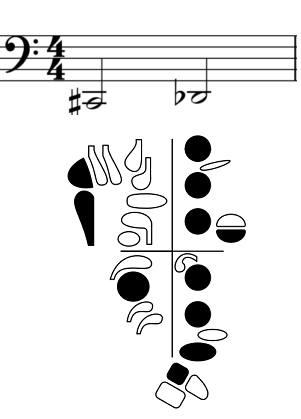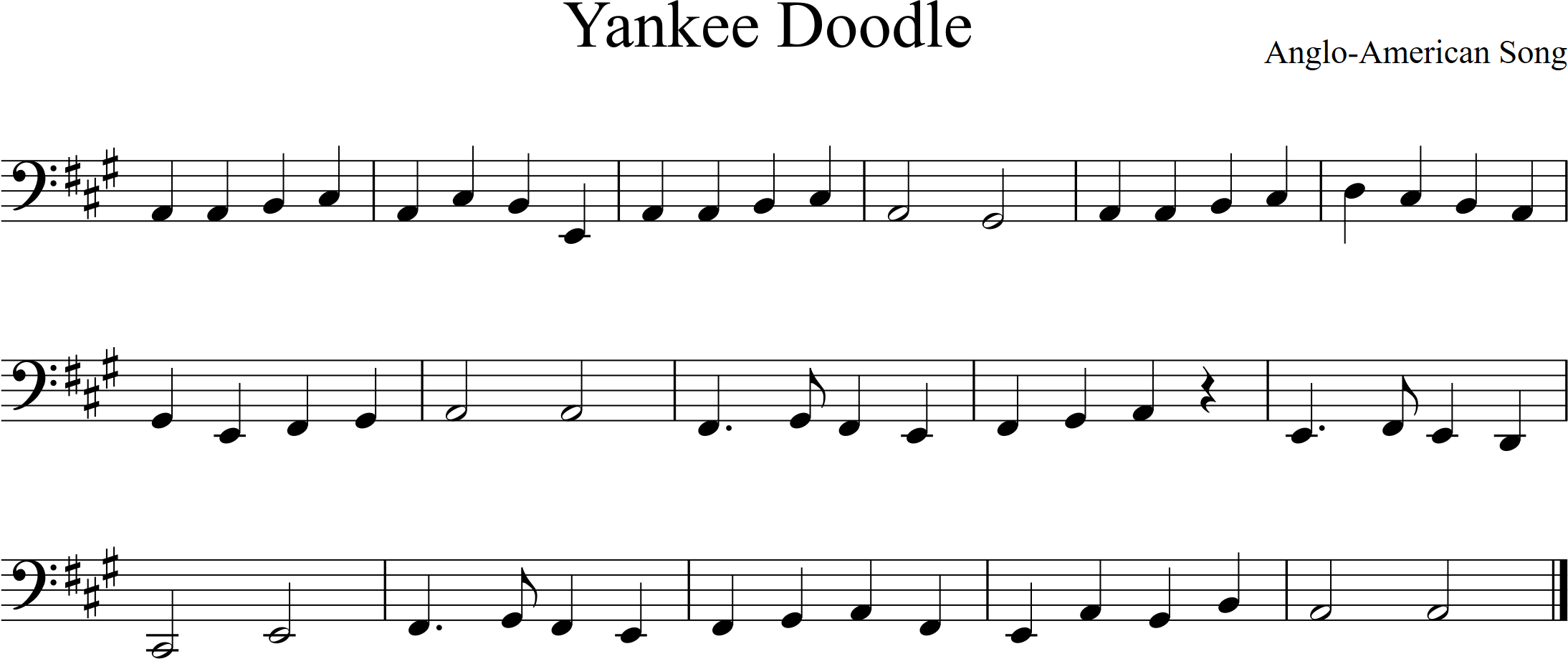The Low C-sharp Key
The low C# key is one of two keys on the front of the long joint; both are operated by the left-hand pinky. The low C# key is the lower of the two and it sits just below the low Eb/resonance key.

Fingering

The fingering for low C#/Db is easy if you think about fingering low C and adding the low C#/Db key in the left-hand pinky. It will help to remember which pinky key to add if you think about the note Eb being higher in pitch than Db/C#. The Eb resonance key is higher on the bassoon than the low C#/Db key.
Left Thumb Position
The left thumb cannot press both the whisper key and the low C key. The thumb must leave the whisper key to press the low C key when playing low C# and rely on the low E key to activate the whisper key. The end of your left thumb needs to point toward the bell of the bassoon when playing low C#. The middle of your thumb will press the low D key and the pad of your thumb will press the low C key.
Matching Pitch
- Make sure you are blowing a warm, slow steady stream of air.
- Use voicing to adjust the intonation (it is probably sharp).

Lefties Low Notes



Twinkle, Twinkle Little Star
This is a simple tune, but the key signature makes the fingerings a challenge.
Remember: Db is fingered like C#, Ab is fingered like G#, and Gb is fingered like F#.
Tip: The practice plan outlined for Baa Baa Black Sheep will work well for this tune too.
- Note Pairs (Db-Ab, Ab-Bb, Ab-Gb, Gb-F, F-Eb, Eb-Db): practice each pair until your fingers are comfortable and coordinated.
- 3-note Groups (Db-Ab-Bb, Bb-Ab-Gb, Gb-F-Eb, F-Eb-Db): practice each group until your fingers are comfortable and coordinated.
- Outline the Melody (Db-Ab-Bb-Ab-Gb-F-Eb-Db): practice the outline until your fingers are comfortable and coordinated.
- Once you are comfortable with the outline of the melody (the pitch pattern), you are ready to add the articulated rhythms and play the tune as it is written.




Feedback/Errata